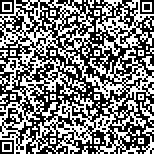| 引用本文: | 林罗敏,唐鹊辉,彭亮,韦桂峰,林叔忠,李湘姣,杨浩文.浮游植物叶绿素a的微波法研究及其与反复冻融法的比较.湖泊科学,2016,28(5):1148-1152. DOI:10.18307/2016.0526 |
| LIN Luomin,TANG Quehui,PENG Liang,WEI Guifeng,LIN Shuzhong,LI Xiangjiao,YANG Haowen.Microwave-assisted method for extracting chlorophyll-a in phytoplankton and its comparison with freezing-thawing extraction method. J. Lake Sci.2016,28(5):1148-1152. DOI:10.18307/2016.0526 |
|
| 本文已被:浏览 8590次 下载 5507次 |

码上扫一扫! |
|
|
| 浮游植物叶绿素a的微波法研究及其与反复冻融法的比较 |
|
林罗敏1, 唐鹊辉1, 彭亮1, 韦桂峰1, 林叔忠2, 李湘姣2, 杨浩文2
|
|
1.暨南大学生态学系, 热带亚热带水生态工程教育部工程研究中心, 广州 510632;2.广东省水文局, 广州 510150
|
|
| 摘要: |
| 为缩短样品处理时间和提高测定准确度,本文设计和优化了微波处理辅助提取浮游植物叶绿素a的方法,并比较了反复冻融法和微波法对浮游植物叶绿素a的提取效率.结果表明:(1)微波法提取叶绿素a的最优处理条件为:高火(额定输出功率800 W)处理60 s左右.过滤水量为:贫营养型水体为1000 ml以上,中、富营养水体为100~500 ml.(2)反复冻融法在测定贫营养型水体时更稳定,而微波法对中、富营养水样提取率显著高于冻融法,可提高7%~12%,对具胶被及硅质外壳的藻类提取效率极显著高于冻融法,测定结果的相对偏差更小,且提取时间较冻融法缩短一半以上,适用于富营养化水体的应急监测. |
| 关键词: 微波法 反复冻融法 提取 浮游植物 叶绿素a |
| DOI:10.18307/2016.0526 |
| 分类号: |
| 基金项目:广东省水利科技创新项目“广东省河流水生态健康评价指标体系及评价方法研究”(2014-01)资助. |
|
| Microwave-assisted method for extracting chlorophyll-a in phytoplankton and its comparison with freezing-thawing extraction method |
|
LIN Luomin1, TANG Quehui1, PENG Liang1, WEI Guifeng1, LIN Shuzhong2, LI Xiangjiao2, YANG Haowen2
|
|
1.Engineering Research Center of Tropical and Subtropical Aquatic Ecological Engineering Ministry of Education, Department of Ecology, Jinan University, Guangzhou 510632, P. R. China;2.Hydrological Bureau of Guangdong Province, Guangzhou 510150, P. R. China
|
| Abstract: |
| In order to save time of sample processing and to improve the determining accuracy, a microwave-assisted extraction method was designed and optimized to extract chlorophyll-a in phytoplankton, and was compared to the freezing-thawing method for extraction efficiency of chlorophyll-a. The results showed that microwave-assisted extraction method was optimal in 60 s treatment with output power of 800 W, and the appropriate water volume for filtration was about 100-500 ml for samples collected in meso-eutrophic waterbodies and 1000 ml for those from oligotrophic waterbodies. The chlorophyll extraction rate of microwave-assisted extraction method was significantly higher than that of freezing-thawing method in meso-eutrophic waterbodies, which can increased by 7%-12%, while freezing-thawing method was more stable in measuring chlorophyll-a of oligotrophic waterbodies. For those algae with a glue shell or siliceous shell, microwave-assisted extraction method had a higher efficiency for chlorophyll-a extraction and a lower relative standard deviation than the freeze-thaw method. The microwave-assisted extraction method needs only one half operation time of the freezing-thawing extraction method, so that it is more suitable for emergency monitoring of eutrophic waterbodies, while the freezing-thawing extraction method is more suitable for monitoring oligotrophic waterbodies. |
| Key words: Microwave-assisted extraction method freezing-thawing method extraction phytoplankton chlorophyll-a |